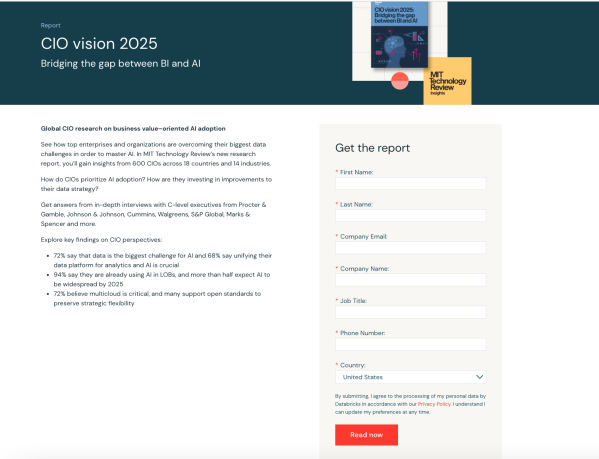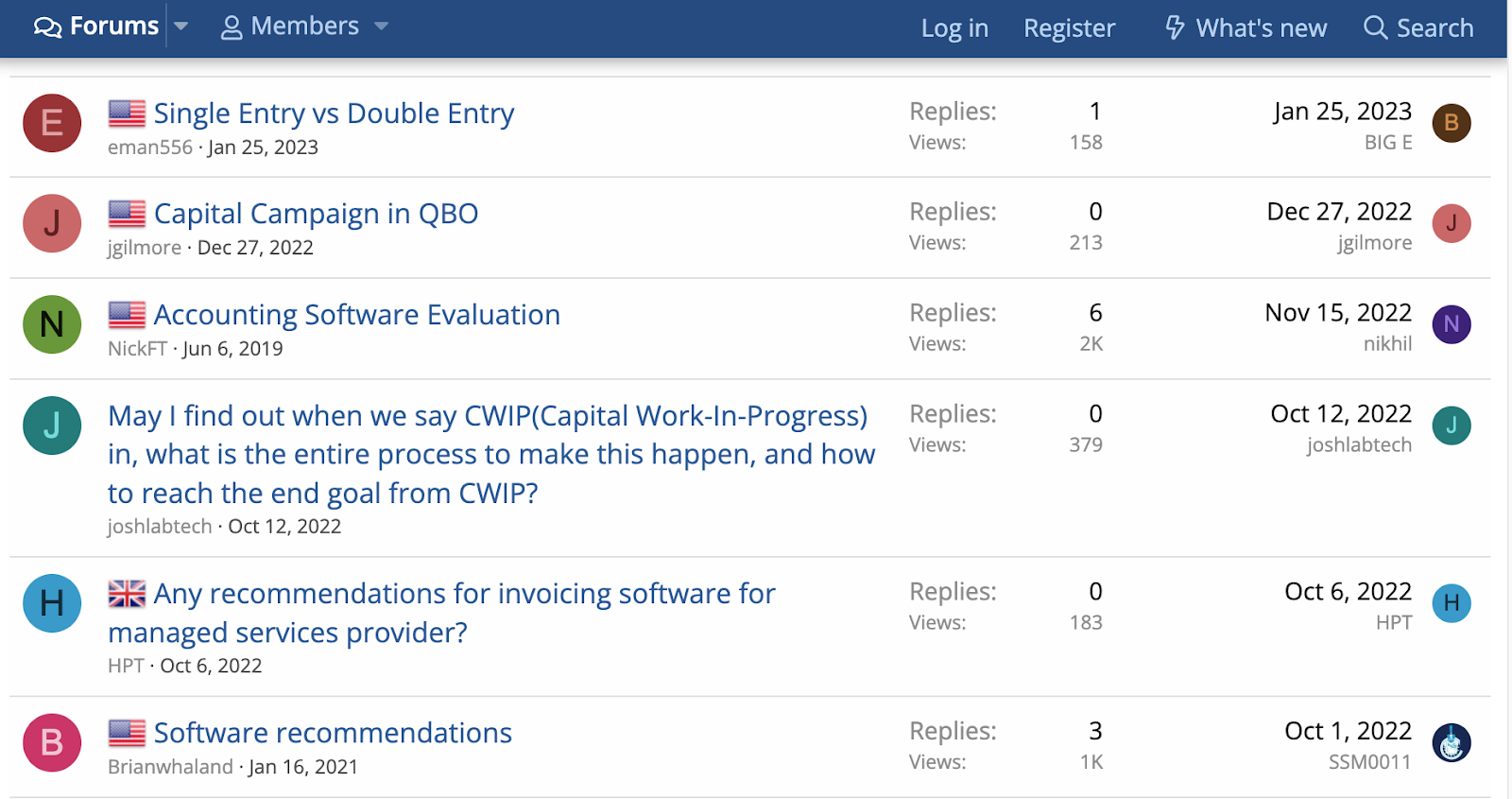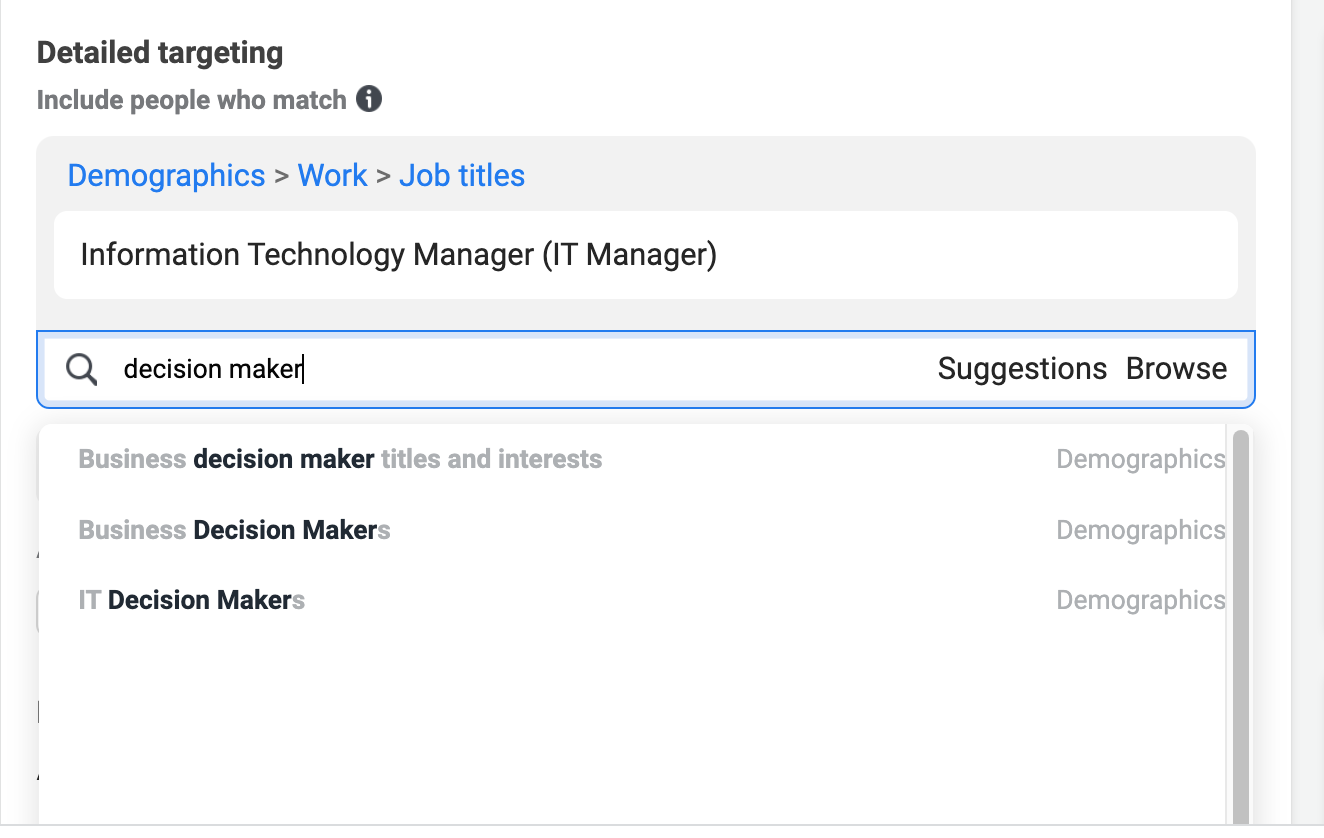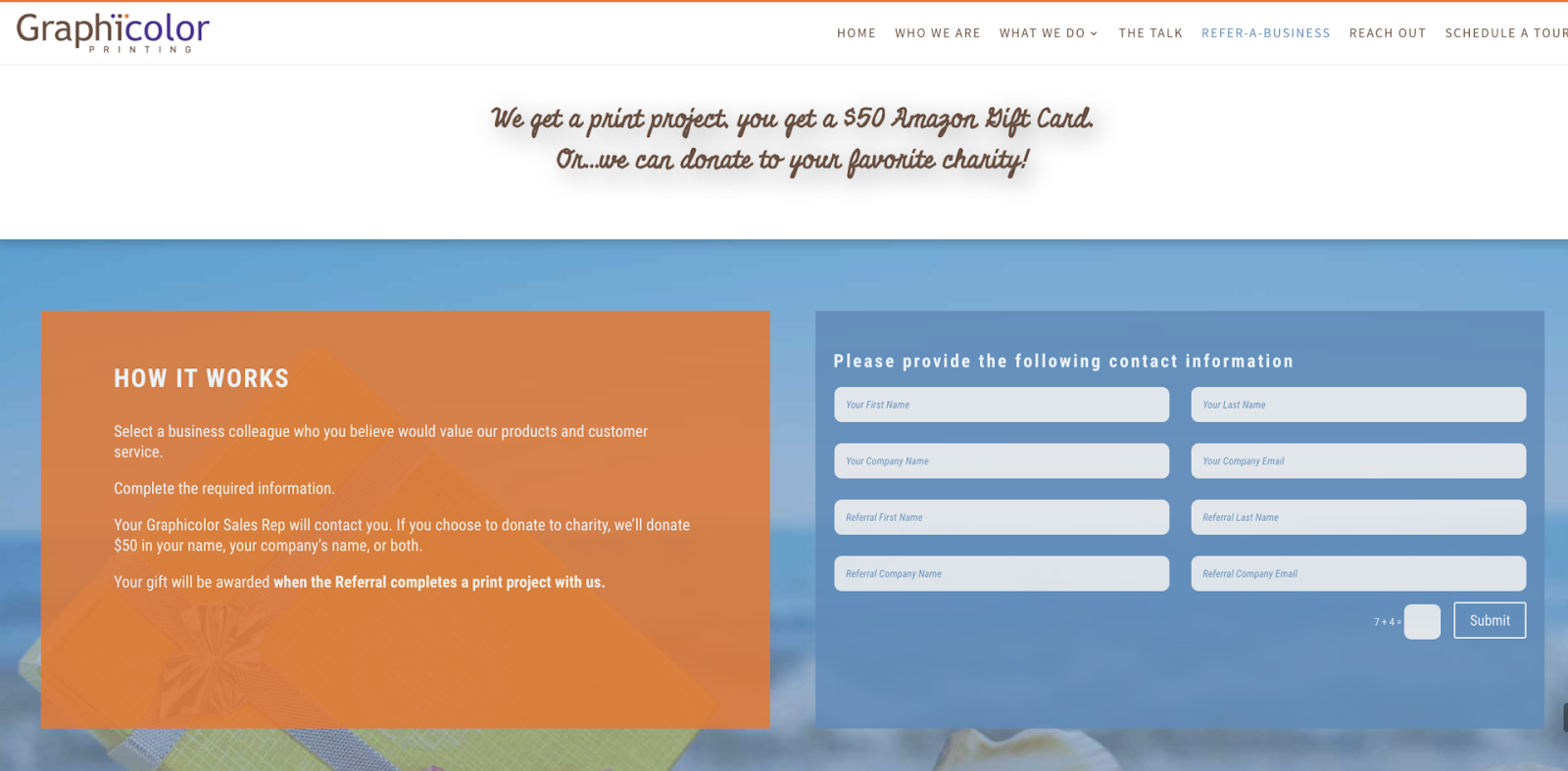
Even with all the ways we have to communicate, email remains a B2B mainstay.
According to the Content Marketing Institute, more than two-thirds of B2B marketers use email to distribute content to their subscribers. Nearly 7 in 10 use email newsletters.
To build relationships and convert interested prospects, you need to know how to build a B2B email list and use effective list-building tools. Here are 12 ideas you can use today, whether you’re growing your email list or building it from scratch.
How to build a B2B email list
When you start learning how to build a B2B email list, the first technique you learn about is the opt-in form — a sign-up form that appears on your website, often on the home page or a landing page.
The opt-in form is the foundation of most B2B email marketing lists but shouldn’t be the only element. You need to promote your business-to-business email list and its immediate benefits to subscribers.
Your prospects already get dozens of emails per day, if not hundreds. They’ll only volunteer to receive more if they’re confident those additional emails will help their organizations grow.
Here’s how to build a B2B email list with value at its center.
1. Create high-value gated content
Before you dig into how to build a B2B email list, you need to create incentives for people to sign up. Gated content is one of the most effective B2B lead-generation incentives because it offers immediate value.
Gated content is educational or informative material that requires interested parties to sign up for your marketing emails in order to access the content. These types of content include:
- Ebooks
- Original research
- Private forums or discussion groups
- Product demos
- White papers
- Webinars
For example, suppose your prospect wants to read your latest consumer research or case study. To do that, they must enter their contact information and agree to receive messages.
Gated content should be high-value and exclusive. If the prospect can’t get it anywhere else, they’re more likely to sign up.
Sponsored research is the perfect example. If you have new industry statistics that could change your prospect’s business choices, invest the time and money to create a report and make it available for download.
2. Create an enticing landing page or pop-up for each content piece
When you learn how to build a B2B email list, one of your first lessons is the importance of a strong landing page. A landing page is the web page your prospects visit when they click a link to download your gated content.
Your landing page should clearly articulate the benefits of downloading the content. Keep it focused on the prospect, and focus on:
- Reminding the prospect of a business need or problem
- Presenting your content as the solution
- Including examples such as enticing statistics
- Adding a clear call to action, such as “Download the guide” or, as below, “Read now”:

3. Add Opt-In Forms to Blog Posts
If you’re not already blogging, now is the time to start. Blogs communicate authority in your niche and provide value to prospects before they ever speak to a member of your sales team.
Plus, blog posts segue perfectly into email subscription offers.
Add a standard tagline to the end of every blog post. Create something brief and straightforward, such as Salesforce’s “Get the latest articles in your inbox”:

Salesforce’s engaging CTA is “sticky,” meaning it stays on the screen as the reader scrolls through the article. As soon as the reader thinks hey, this is great; I can use this stuff — they can click to sign up for the blog and any other Salesforce newsletters they want.
Clicking the Sign up now button generates a pop-up:

With pop-ups, readers can subscribe and go straight back to the article without having to navigate away. These are usually simpler than landing pages, so they don’t distract from the main content.
4. Provide valuable answers on question-and-answer sites
Your next task is to drive people to your website’s landing pages or opt-in forms. One way to do this is to go on question-and-answer sites such as Quora and look for potential B2B clients seeking business advice.
Quora is probably the most well-known question-and-answer site online today. To cast a wider net, you can also post on alternative sites like ASKfm or StackExchange or industry-specific sites like Stack Overflow.
Find questions relevant to your industry, and you can attract email subscribers simply by providing informative and detailed answers. For example, suppose you offer project management software solutions for Agile teams. If you use Quora’s search tool to look up “project management,” you’ll find multiple questions such as:
- What is the best project management tool?
- What is project management?
- Which is the best agile software project management tool?
A question doesn’t have to be related to your product. For example, if you were to answer the question about defining project management, you might discuss skills like organization and communication. Then, you could add a link to your blog posts or website, encouraging readers to learn more.
The page you link to should have an opt-in form or link to an opt-in page.
5. Participate in industry forums
Industry-specific forums are ideal for niche and technical businesses, from software-as-a-service (SaaS) providers to manufacturing supply companies and beyond.
Many trade and professional associations have member forums. If you’re already a member of any of these organizations, commit to joining at least two or three discussions per week.
Look for mentions of other forums and discussion groups, and join those whenever possible. You can also find popular B2B forums by following industry discussions on Twitter and LinkedIn.
Another simple way to find new industry forums is by Googling “[your industry] + forum.” For example, an accounting software developer searching for “accounting + forums” might find AccountantForums.com, which often has multiple requests for product recommendations:

Also, don’t underestimate the power of industry groups on Facebook and LinkedIn. Like stand-alone forums, these are full of industry professionals looking for advice.
Wherever you go, focus on providing value and not self-promoting. It’s okay to end a longer post with an invitation to subscribe. Short answers are for relationship-building and brand awareness.
If people express interest, you can guide them to your website.
6. Use Facebook lead-generation ads
Facebook lead-generation ads are now even more helpful for B2B marketers. Thanks to a recent update that lets you target more potential prospects. You can narrow your audience based on location, age, gender, and professional role. For example, if you’re learning how to build a B2B email list for a SaaS company, you might target your ad to IT managers.
In addition, thanks to a 2022 update, Facebook allows B2B marketers to target their ads to broader prospect categories, including:
- Business decision-makers
- IT decision-makers
- New active businesses
- Business decision-maker titles and interests (those who Facebook identifies as decision-makers based on their information)
You can select any of these criteria by selecting those criteria from the Ads Manager drop-down:

Facebook lead-generation ads let your prospects sign up for your email lists directly from the ad without needing to visit your landing page.
Facebook ads offer your choice of call-to-action buttons based on your business goal and format. For opt-in (“instant”) forms, your options include the following:
- Book now
- Download
- Get offer
- Get quote
- Learn more
- Subscribe
Encourage viewers to click by emphasizing the benefits of subscribing. Be concise and reader-focused with messages like:
- Exclusive tips in your inbox
- Get insider advice free
- Pro tips delivered to you
You can also offer a tangible benefit, such as your gated content. Reusing a content piece once or twice is possible, but aim to have a variety in rotation to suit different interests. For example, someone who wouldn’t opt in for a webinar might offer their email in exchange for an Excel template or ebook.
7. Create a Referral Program
According to the TrustRadius B2B Buying Disconnect Survey, customer referrals were the most effective channel for tech marketers during the pandemic. Also, when asked what decision-making resources they’d miss most, referrals were the fourth most popular option.
Referrals carry plenty of weight because they come from someone the prospect trusts. When they confirm their membership in your email list, reward the referring client.
Start by creating a landing page with an opt-in form for clients to enter their information and the contact details for the business or representative they’d like to refer:

Make sure your landing page includes all rules and eligibility requirements. This fine print can be below the fold. In other words, the reader has to scroll down to see it.
Start by sending your referral page to your most loyal and long-term clients. Someone who has used your product or service for a decade will be a more trusted source than someone who just signed up.
If the program succeeds, you can invite more clients or expand your incentive plan. For example, you might offer a more valuable incentive if someone subscribes to your email list and later becomes a paying customer.
8. Add email requests to your live chat
If you have a live chat option on your website, instruct your representatives to collect email addresses from as many people as possible.
Live chatters are typically in the awareness or consideration stage of the customer journey map. Either they’ve just realized a business need and have found you, or they’re weighing potential solutions.
In both cases, the prospect gathers information for the decision-making process. There’s almost always an opportunity to ask them if they’d like to submit their email to receive more information.
Tell them what kind of emails they can expect to receive framed in the context of how they’ll benefit. For example:
I’d like to get your email to send you some additional information. You’ll get some basic information about how our product solves [pain point], plus resources to learn more. You can unsubscribe at any time. Does that sound good?
If the person wants to know more, describe your emails and how readers benefit. Remember, these customers usually shop around. Highlight any information or special offers they can’t get anywhere else.
9. Host a webinar
Hosting a webinar is the perfect project when you’re learning how to build a B2B email list. Attendees already have to enter their information to register, so why not have them check a box opting in to receive emails from you?
To successfully host a webinar, start with topics that interest your target audience. Think about what questions you frequently field from new and potential customers. You can also check your website analytics to determine which pages and blog posts get the most traffic.
Create a sign-up form including the contact information you want for your list. Add an opt-in checkbox to the registration form. Make it as enticing as possible, ideally connected to the webinar’s topic. For example, a webinar on trends in payment processing may offer an opt-in like this:
YES, I would like to receive emails with in-depth articles on payment processing and advance access to customer-favorite features.
Promote your webinar through all available channels, including social media and paid ads. Remember to invite your current subscribers with a special call to forward the invitation to family and friends.
10. Partner with complementary businesses for cross-promotion
Most businesses contract with multiple vendors to sell their products and services. Many of these vendors offer complementary but non-competing services. For example:
- An SEO agency and a web development company
- An industrial supplier and a logistics company
- A payroll service and an accountant
- A customer relationship management (CRM) software and a customer support outsourcing company
Complementary businesses like these can promote each other’s email lists without worrying about losing business to a competitor.
Build a list of potential partners by considering what types of services your clients use. Focus on the products and services that relate to yours but aren’t direct competitors.
Research a few potential partners to determine if they have email lists. Reach out to those that do, asking if they’d be interested in a mutually beneficial promotional program. Elements could include:
- Partner promotions in each business’s newsletter or email
- Blog posts highlighting each other’s businesses
- Co-sponsored webinars
As the relationship progresses, you can also solicit promotional ideas from your partners. When these programs go well, they have the potential to become lucrative long-term arrangements.
11. Ask for emails at trade shows and conferences
People expect to network at industry events, so you already have an advantage. Your challenge is to rise above the noise and convince your prospects that of all the people asking for their contact information, you’re the one that will help them the most.
You need to convince them why they should sign up before you formally ask for their email. The more concrete your incentive, the better. For example, for each signup, you might offer one of the following:
- A free trial of your product or service
- Expert tips from top industry leaders
- Downloadable content (whitepaper, ebook, report, etc.)
Unless you’re targeting several different customer segments, you’ll usually need only one incentive per event.
You’ll also need convenient email list sign-up tools so attendees can submit their addresses on-site. These include:
- A list-builder app like that lets you collect names and emails via your tablet
- A scan-to-join QR code to display at your vendor table or print on your business cards
- A printed sign-up form for attendees to sign up quickly without needing to access their devices
With convenient list-building tools like these, you can collect email addresses anytime and anywhere during an event. To get you started, here are three event scenarios where it’s appropriate to introduce your email list — plus scripts that bring up the topic organically and effectively.
#1: At your booth
Thanks for coming by to check us out. Would you like to receive [incentive]? I’ll just need your email address. You’ll receive an email or two every month with exclusive information, promotions, and special event announcements. We don’t share our contact list with anyone, and you can unsubscribe anytime.
#2: At your workshop or presentation
Thank you all for coming! If you’re interested in staying updated with the latest in [presentation topic], use the QR code or sign-up sheet at the back to join our email list. All new subscribers currently receive [incentive]. We never share your information, and you can unsubscribe anytime.
#3: In a networking event
[Topic] definitely is an important issue for our industry. If you’re interested in learning more, there’s a QR code on this business card to sign up for our mailing list. We send out exclusive content a few times a month, and right now, all new subscribers get [incentive].
One-on-one conversations are often the most productive because you can answer questions immediately and adapt your pitch. As always, the potential subscriber’s needs should remain your top priority.
12. Segment your growing list
Once you’ve learned how to build a B2B email list, your next step is mastering data collection for email segmentation.
It sounds like a complicated process, but don’t worry — it’s as simple as learning more about each subscriber by adding a line or two to your opt-in forms. You might ask about:
- Company size
- Team size
- Industry
- Subscriber job title or department
If you offer multiple products or services, consider adding checkboxes so subscribers can indicate which offerings they want to hear about. For instance, in the Salesforce example above, prospects can subscribe to specialized newsletters such as IT, sales, service, and marketing.
Should I buy an email list or pay for leads?
Absolutely not.
You may have heard people talk about jump-starting your email strategy with a purchase list, but it’s something to avoid at all costs. It’s often considered unethical, is likely to backfire, and is usually prohibited by professional email service providers.
Purchased email lists may be the quickest way to build a B2B email list, but that’s the only benefit — and it isn’t a strong one. You end up with a list of emails, but those emails may not be accurate or current.
More importantly, when you purchase an email address, that person hasn’t signed up to receive your messages. So adding them to an email campaign may be far removed from what they’re even looking for.
Finally, if you do get an email into your purchased target’s inbox, they’re more likely to mark the message as spam. And too many spam messages will hurt your deliverability across the board. Potentially resulting in delays of future emails and even being banned by an email provider.
Buying an email list isn’t worth it. Instead, stick with the effective steps you’ve already learned, and you’ll build a list that truly works.
How to build a B2B email marketing list when your time is limited
Now that you’ve learned how to build a B2B email list, it’s time to choose your first step. And when you’re already busy running a business, you want that first step to be the most efficient.
Start by reviewing the content you’ve produced or are in the process of creating. What would make an enticing gated piece? Turn that into your incentive for joining your B2B contact lists.
Once you have that ready, you can start promoting using one of the techniques described above. There’s no universal first step — it all depends on how your business works and how you interact with prospects.
Building up your B2B mailing list may take time, and that’s okay. The more subscribers you get, the more relationships you’ll build — and the more prospects you can convert into customers.




